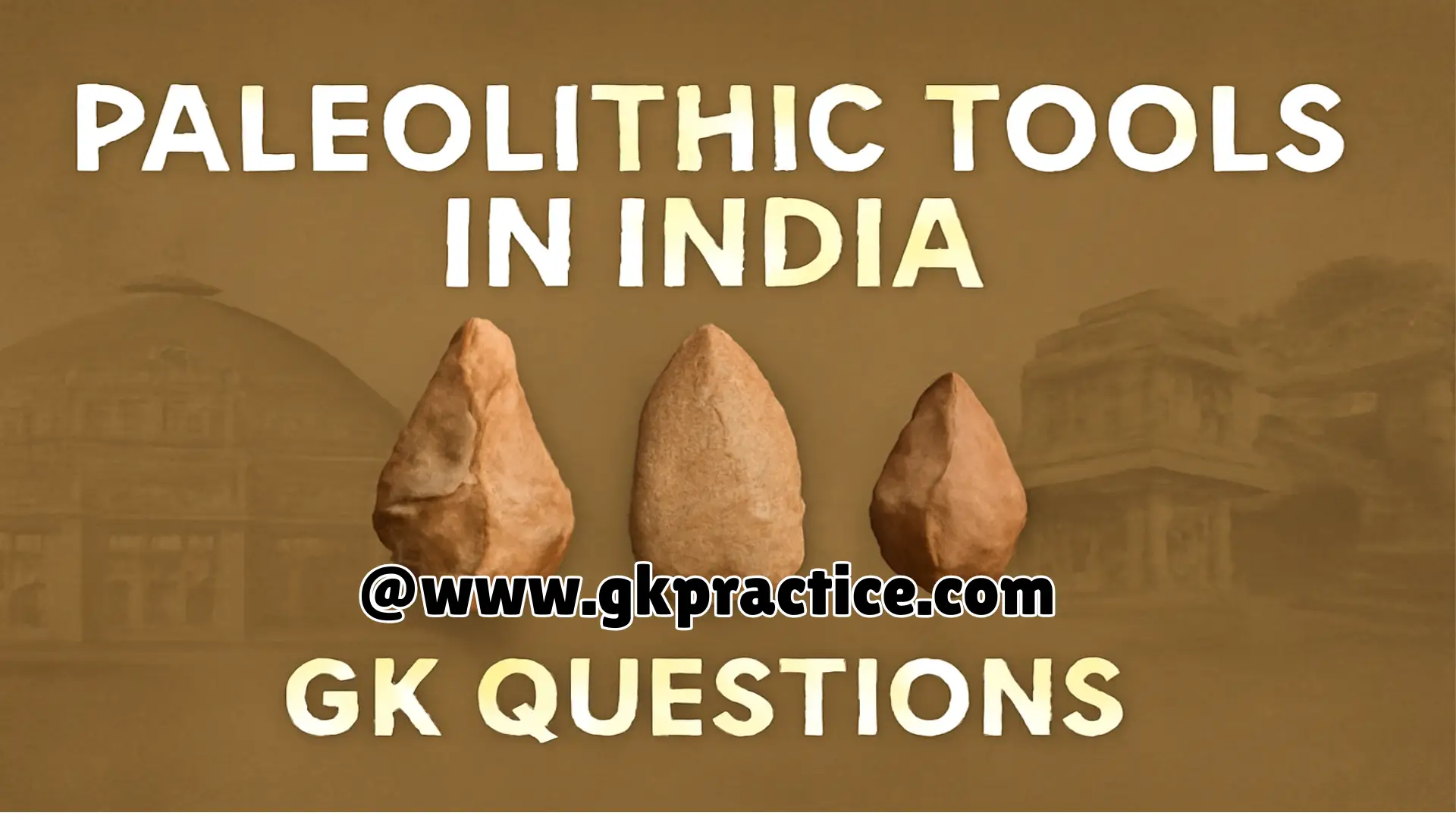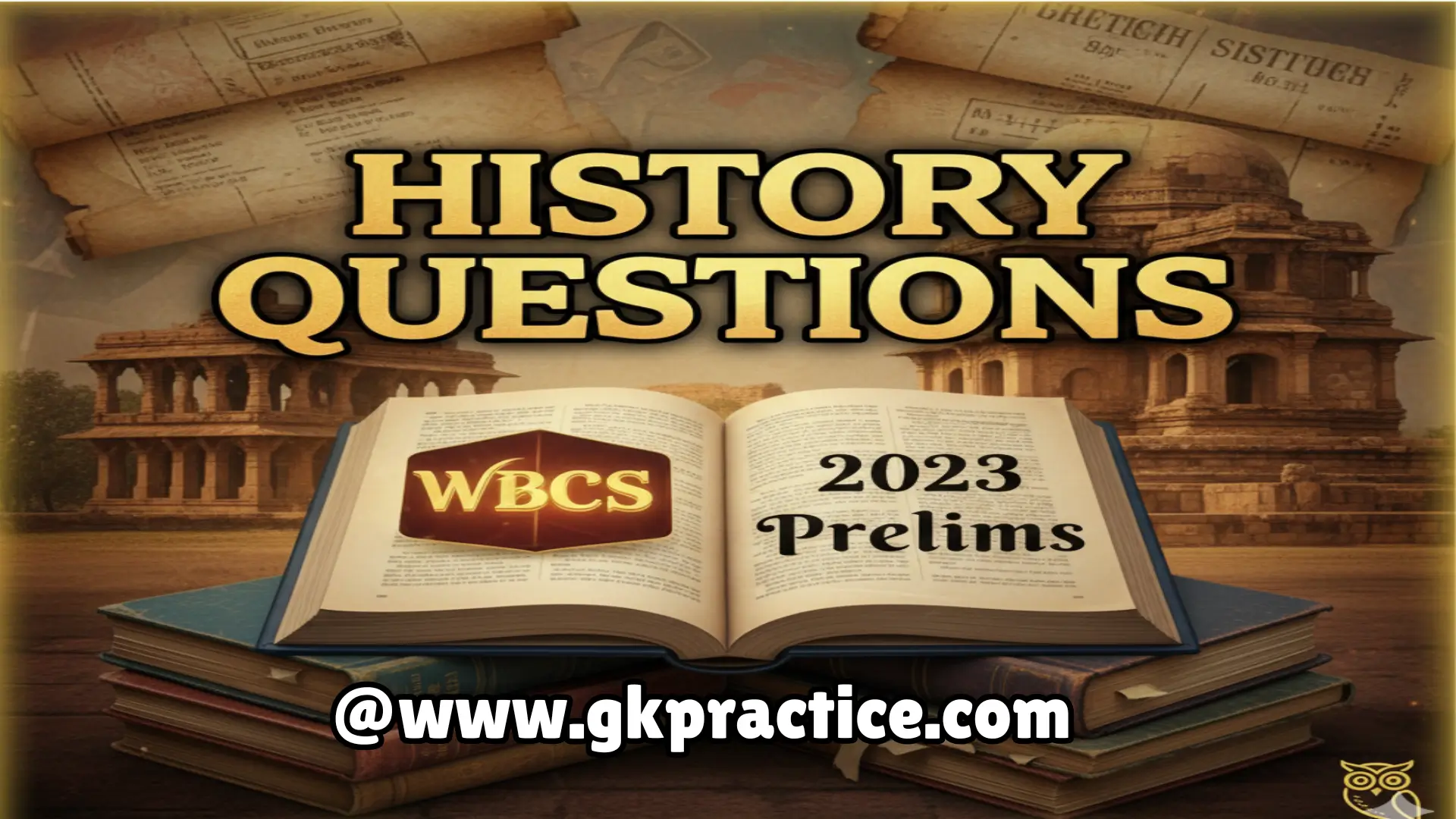Q21) In tool-making, “core” refers to:
a) The raw material block
b) The finished weapon
c) The hafted handle
d) A metal casting
Explanation: In Paleolithic technology, the “core” is the raw block of stone from which flakes are struck. These flakes could be used directly or shaped further into tools. Core tools, like hand-axes and cleavers, were characteristic of the Lower Paleolithic phase.
Q22) Which tool is specifically associated with hide processing in Paleolithic times?
a) Scraper
b) Cleaver
c) Axe
d) Chopper
Explanation: Scrapers were widely used in the Middle Paleolithic phase for cleaning animal hides and processing them into usable material for clothing or shelter. Their flat, sharp edge made them suitable for this purpose. This reflects the increasing adaptability of early humans.
Q23) The main hunting weapon in the Upper Paleolithic was:
a) Polished axe
b) Spear with stone tip
c) Bronze sword
d) Wooden plough
Explanation: Upper Paleolithic humans used spears tipped with finely worked stone blades for hunting. This provided greater efficiency in hunting large animals compared to earlier heavy hand-held tools. It represents a significant advancement in weapon-making.
Q24) Which technique became more refined in Upper Paleolithic tool production?
a) Pressure flaking
b) Polishing
c) Casting
d) Melting
Explanation: Pressure flaking is a refined technique of producing small, sharp blades by pressing rather than striking. This allowed greater control over tool shape and efficiency. It became prominent during the Upper Paleolithic phase in India and marks a technological leap forward.
Q25) Which site in India shows a long sequence from Lower to Upper Paleolithic?
a) Bhimbetka
b) Dholavira
c) Mehrgarh
d) Kalibangan
Explanation: Bhimbetka rock shelters in Madhya Pradesh provide evidence of continuous human occupation from the Lower Paleolithic to the Mesolithic. The site contains tools like hand-axes, scrapers, blades, as well as famous cave paintings, making it one of India’s richest prehistoric sites.
Q26) Which raw material, besides stone, was increasingly used in Upper Paleolithic tools?
a) Bronze
b) Bone and antler
c) Iron
d) Copper
Explanation: In the Upper Paleolithic phase, people began making tools from organic materials such as bone, antlers, and ivory. These were lighter and could be shaped into needles, harpoons, and points, showing greater diversity and innovation compared to earlier stone tools.
Q27) Choppers are classified as:
a) Core tools
b) Flake tools
c) Polished tools
d) Metal tools
Explanation: Choppers are large, heavy tools made by flaking one side of a core stone to produce a cutting edge. They were used for chopping wood, breaking bones, and cutting meat. Being core tools, they are typical of the Lower Paleolithic culture.
Q28) Which of the following marks the transition from Paleolithic to Mesolithic?
a) Use of microliths
b) Use of iron tools
c) Development of agriculture
d) Invention of pottery
Explanation: The transition from Paleolithic to Mesolithic is marked by the use of microliths—tiny, sharp stone tools often fitted onto wooden or bone handles. These advanced tools reflect a more efficient hunting-gathering lifestyle and paved the way for later agricultural developments.
Q29) Which tool is considered the most iconic of the Lower Paleolithic culture in India?
a) Hand-axe
b) Scraper
c) Blade
d) Microlith
Explanation: The hand-axe is the most iconic and widely found tool of the Lower Paleolithic phase in India. It was multipurpose, used for chopping wood, butchering animals, and digging. Its widespread presence across sites like Attirampakkam and Belan valley makes it a cultural hallmark of the early Stone Age.
Q30) Which tool type shows technological advancement in the Upper Paleolithic phase?
a) Chopper
b) Cleaver
c) Blade
d) Axe
Explanation: The Upper Paleolithic phase in India is characterized by long, parallel-sided blades made from fine-grained stones like chert. These tools were sharper and more efficient than earlier core tools. They reflect improved craftsmanship and adaptability, setting the stage for microlithic tools in the Mesolithic period.
Paleolithic Tools in India GK Questions are vital for understanding early human culture and exam preparation. From Lower Paleolithic hand-axes to Upper Paleolithic blades, each tool shows technological progress. Regular practice of these GK questions will boost your confidence in history-based competitive exams.
👉 For more GK practice, check out:
- Ancient Books Of India – Complete List For Static GK – GK Practice
- Indus Valley Civilization Architecture Important GK Questions & Answers – GK Practice
📌 Don’t forget to subscribe to our YouTube channel for video explanations: www.youtube.com/@GKprac







